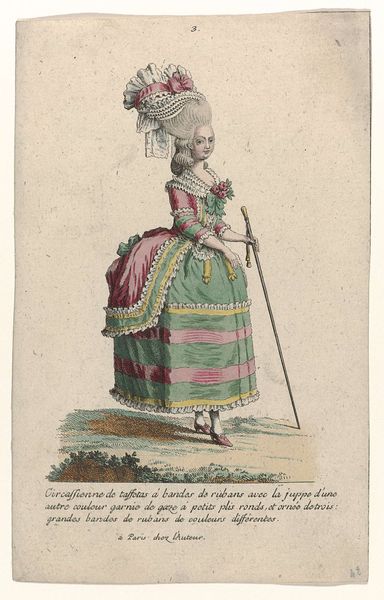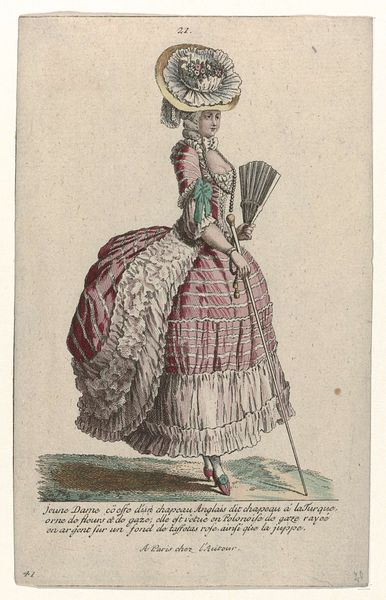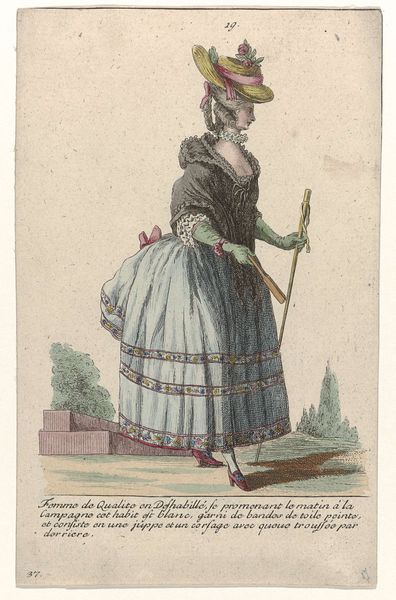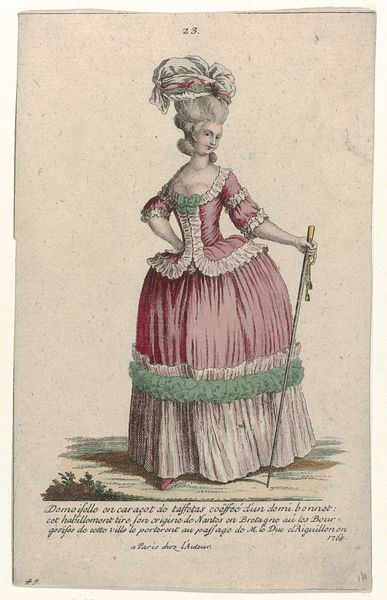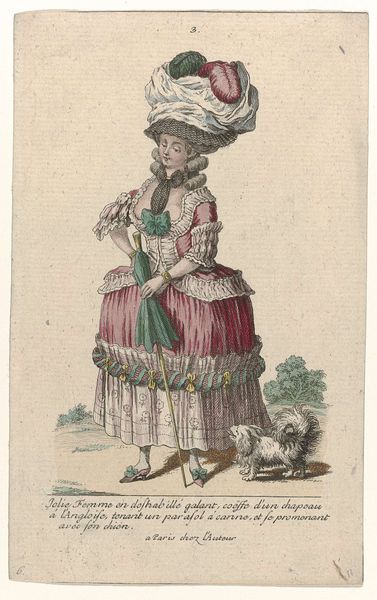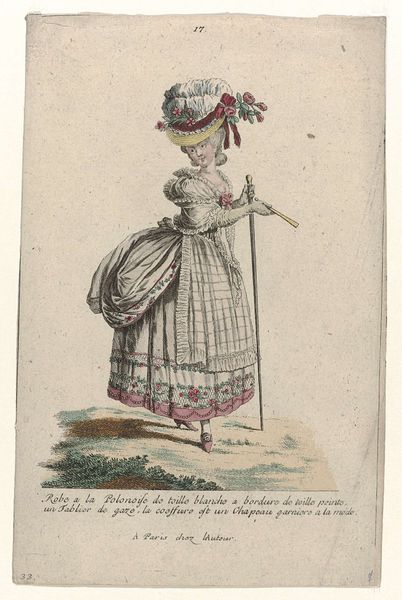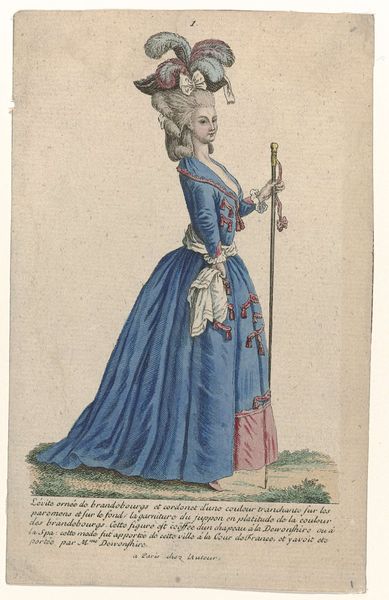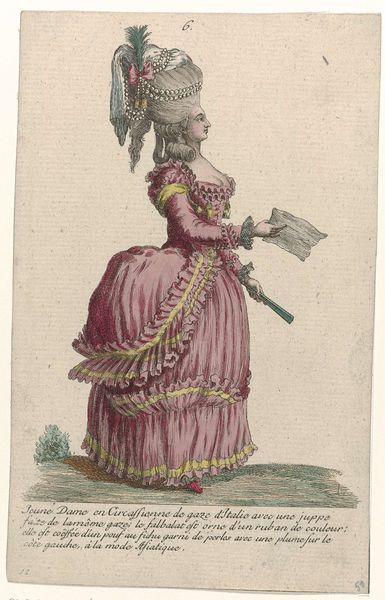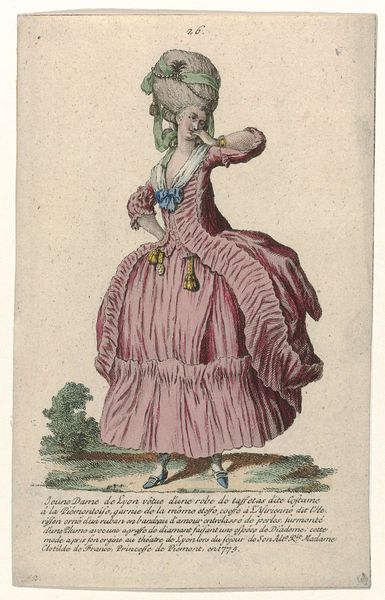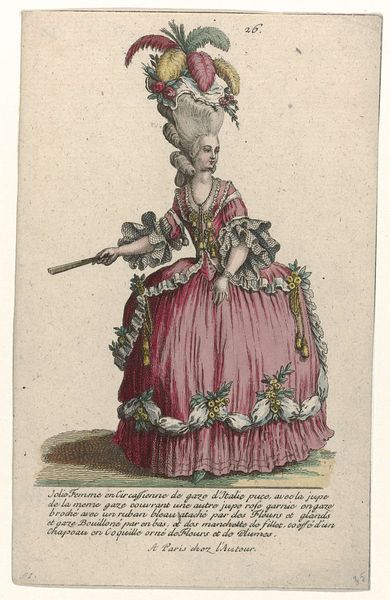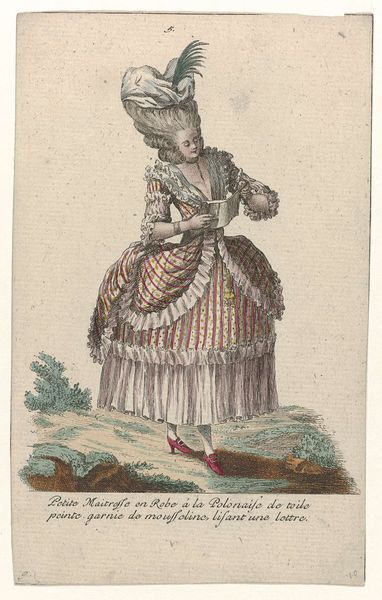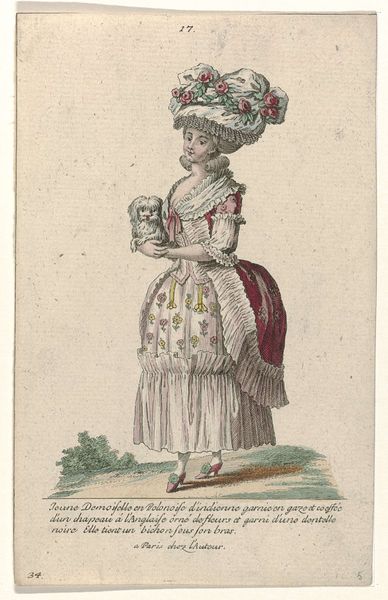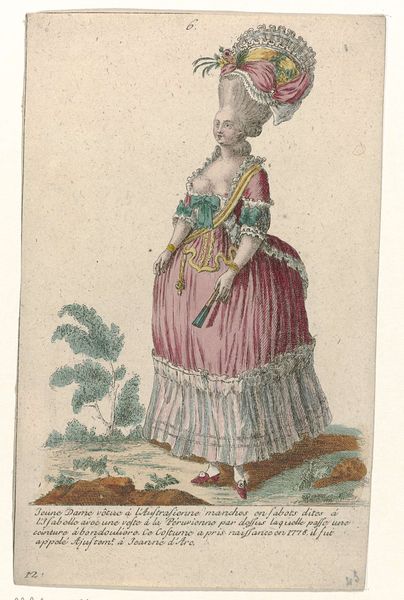
Gallerie des Modes et Costumes Français, 1785, nr. 14, nr. 27, Kopie naar J 53 : Bourgeoise élégante se promenant (...) c. 1785
0:00
0:00
Dimensions: height 177 mm, width 110 mm
Copyright: Rijks Museum: Open Domain
Editor: Here we have an engraving from around 1785 titled "Gallerie des Modes et Costumes Français, 1785, nr. 14, nr. 27, Kopie naar J 53 : Bourgeoise élégante se promenant...". It depicts a fashionable woman of the time, and what strikes me most is the incredible height of her elaborate wig and how that speaks to status and power. What can you tell me about this piece? Curator: Indeed, the towering hairstyle is instantly captivating. It’s vital to recognize how these seemingly frivolous fashions reflected deeper societal structures. Consider, who had the time and resources to maintain such a look? It wasn’t the working class, but rather women of the aristocracy. And what does this signal? A clear visual marker of privilege in a society inching closer towards revolution. Editor: So, the excess becomes a symbol of something larger? Curator: Precisely! It's crucial to examine the power dynamics at play. The print comes from a time when questions of representation were increasingly important and when fashion magazines tried to appeal to a new, growing bourgeois class who aspired to these aristocratic styles. We need to consider whose stories are being told, and by whom, in these idealized depictions. How do these images perpetuate certain ideals while perhaps excluding others? Editor: I hadn't really considered it that way before. It seems almost like a form of propaganda then. Curator: It’s not necessarily propaganda, but it's about promoting certain tastes and appearances. Looking at the details, even her casual country walk is a staged performance, highlighting the artificiality inherent in societal expectations for women of that era. What do you make of the title itself, and how it underlines the tension between genuine expression and curated appearance? Editor: That's a really interesting point. The very name suggests that fashion here isn't personal, but a spectacle to be observed, analyzed, copied. The title seems self-conscious in some way, and aware of being perceived by its consumers, inviting the bourgeois to emulate aristocracy. Curator: Exactly! We learn much from these "minor" works when situating them inside broader societal struggles and ideas. Editor: Thanks, this really opened my eyes to all the things I was missing.
Comments
No comments
Be the first to comment and join the conversation on the ultimate creative platform.
